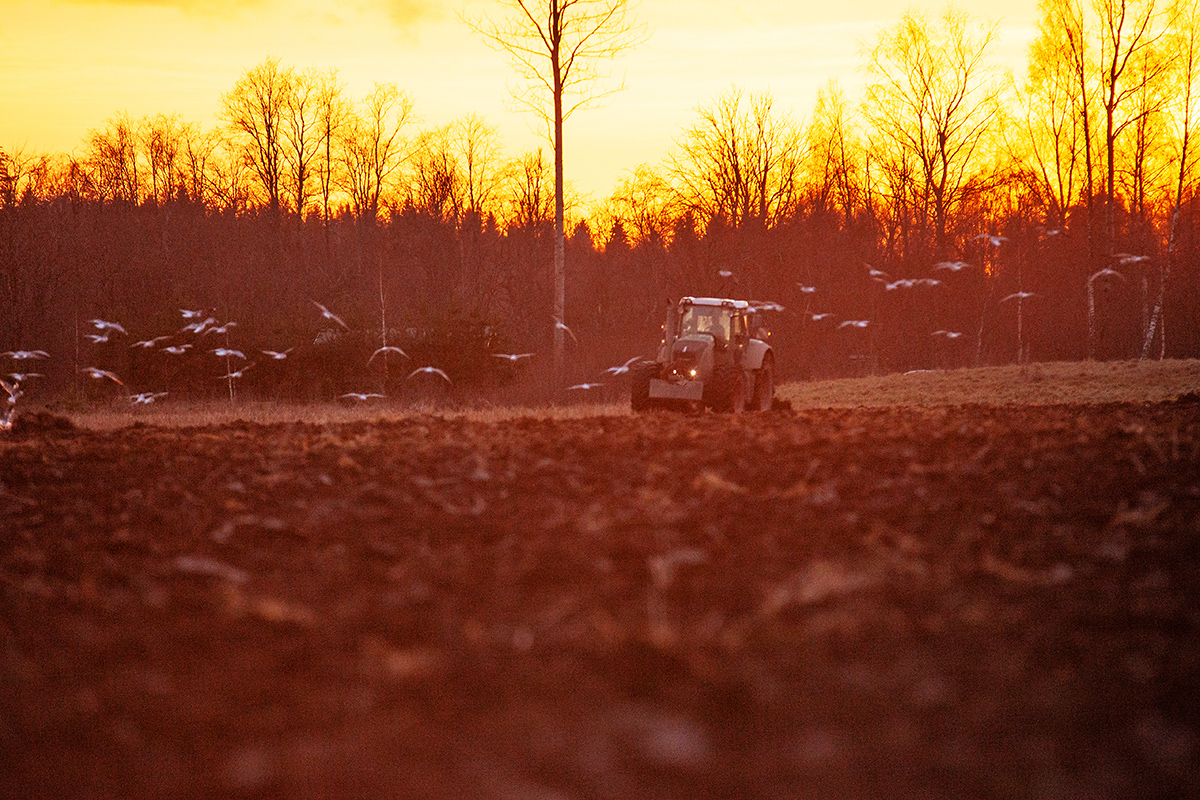Soil erosion causes the loss of 25–40 billion tonnes of soil worldwide every year
It is estimated that three square kilometres of soil are destroyed every day in Europe [1].

Due to urbanisation and road construction, an area of around 200,000 square kilometres in Europe, or the size of the United Kingdom, has lost its function permanently. The global economic damage from deforestation and land degradation is estimated at 1.5–3.4 trillion euros per year, representing between 3.4% and 7.5% of the global GDP [2].
Most of the world’s soil resources are in a satisfactory, bad, or very bad condition, and in most cases, the situation is getting worse.
Indicators of soil degradation are a decrease in soil biodiversity, organic matter, or nutrients, soil acidification or salinisation, soil compaction or contamination, and soil erosion. Soil erosion causes 25–40 billion tonnes of soil loss worldwide every year. If nothing is done to prevent erosion, 1.5 million square kilometres of land will be lost from use in the world by 2050 – an area as large as Germany, France, and Spain combined.
Soil degradation (loss of soil fertility due to organic and mineral transformation, removal of some substances, and trampling) is caused by [3]:
- pesticide contamination and over-fertilisation (nitrates and phosphates), which have a negative impact on soil organisms;
- erosion and loss of organic matter;
- compaction of soil by heavy machinery;
- acidification of soils because of acid rains.
Causes of soil destruction
The main global phenomena causing soil destruction are floods, erosion, landslides, greenhouse gas emissions, loss of biodiversity, famine and drought, as well as poverty and migration, deforestation, population growth, urbanisation, industrial pollution and waste, climate change, and unsustainable land use and road construction.
In addition to food production, land is also needed, for example, for housing construction, construction of infrastructure objects of public interest, and energy production. These interests are often in competition with each other and may not always have long-term goals in mind: for example, buildings and roads are often built on land with the most fertile soils, because it is in the vicinity of such areas that people settled centuries ago – and through that, the areas can no longer be used for agriculture. At the same time, the world’s growing population is threatened by the scarcity and degradation of land suitable for food production.
As the world’s population grows, agricultural land becomes increasingly valuable. According to various studies, in order to feed the world’s population in 2050, 50–70% more food must be produced than today. The growing demand for food has been met by the utilisation of additional agricultural land and an increase in agricultural productivity, but today, the opportunities for expanding agricultural land have largely been exhausted. Thus, the question of how well agricultural land is handled as a major food production resource is becoming increasingly important [4].
The protection of soil
According to section 5 of the Constitution of the Republic of Estonia, the natural wealth and resources of Estonia (including fertile soils) are national riches which must be used sustainably.
The valuation of agricultural land is also one of the principles expressed in the national plan ‘Estonia 2030+’, and regulations for the protection of valuable agricultural land are also being developed and enforced to achieve:
- legal protection of high-value agricultural land and its soils;
- agricultural use of valuable agricultural land as far as possible and thus security in food production;
- restriction on the construction of buildings on valuable agricultural land, afforestation, and changing the purpose and use of the cadastral unit intended for profit-yielding land;
- national overview of valuable agricultural land;
- recording valuable agricultural land parcels in the register of agricultural land parcels and on the corresponding map.
Last modified: 15.11.2021
_____________________________________________________
[1] 2017. Euroopas hävib iga päev kolm ruutkilomeetrit mulda. https://www.pollumajandus.ee/uudised/2017/09/28/euroopas-havib-iga-paev-kolm-ruutkilomeetrit-mulda
[2] M. Karjatse. Mulla tähtsust tuleb teadvustada. Sakala 08.08.2018. https://sakala.postimees.ee/4274271/mulla-tahtsust-tuleb-teadvustada
[3] Keskkonnakaitse majandushoobade rakendamise vajadus ja võimalused Eesti põllumajanduses. 2008. Eesti Maaülikool. Tartu.
[4] Seletuskiri maaelu ja põllumajandusturu korraldamise seaduse muutmise ning sellega seonduvalt teiste seaduste muutmise seaduse eelnõu juurde. https://loodusveeb.ee/sites/default/files/inline-files/SELETUSKIRI.pdf